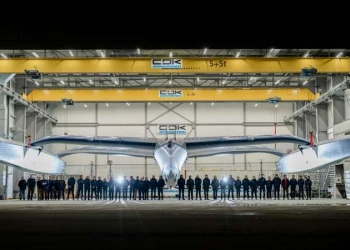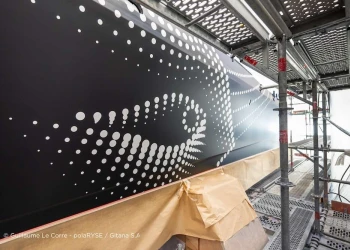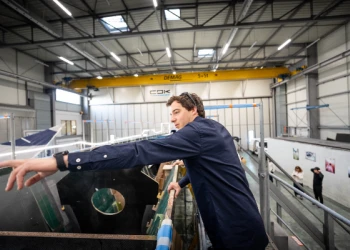
Brest Atlantiques The Maxi Edmond de Rothschild outward bound
Brest Atlantiques The Maxi Edmond de Rothschild outward bound
In the past six months since their arrival within Gitana Team at the helm of the Maxi Edmond de Rothschild, the duo comprising Charles Caudrelier and Franck Cammas has left nothing to chance. From integrating a group, getting a handle on a machine like Gitana 17 and enabling her to progress and evolve… it’s been a steep learning curve. In around ten days, they will be at the start of the Brest Atlantiques. This new race reserved for maxi-multihulls will be their first key sports challenge, as well as the first major offshore confrontation since the Route du Rhum 2018. Suffice to say, it’s an important and long-awaited moment.
“We’re on the home straight, with just one sail scheduled before the start. We’ve covered every element we wanted to implement for the race and all that remains now is the details. I believe that with the team’s support, we really managed to make full use of the opportunities that came our way and the time we had at our disposal to improve the Maxi Edmond de Rothschild. We’re exactly where we wanted to be on a technical level! We’ve been waiting for this race for the past six months. It’s our first major sports meet as skippers of Edmond de Rothschild and it’s this year’s main objective so inevitably there’s a sense of impatience with 10 days to go until the start. Our technical strategy this year has been framed around our participation in the Brest Atlantiques. Charles and I have had to bide our time and we’re keen to do things right both on a competitive and technical level,” assures Franck Cammas.
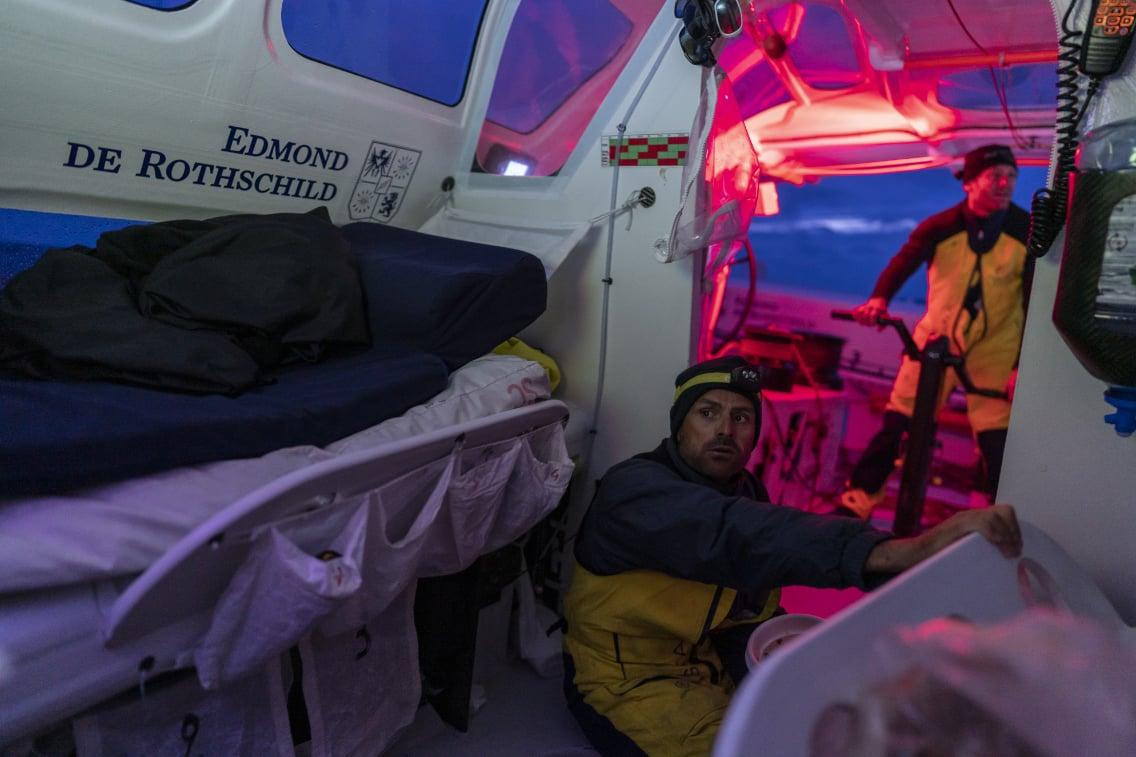
Call room
In Brest from tomorrow, a period very familiar to competitive sailors begins: a pre-start phase where the on-the-water training sessions give way to preparing the weather on shore in the run-up to the race start. Everyone manages their time in their own unique way during their final days on shore and within the Edmond de Rothschild duo, Franck Cammas and Charles Caudrelier don’t share the same vision of this period in the ‘call room’.
“I don’t particularly like the days before the start as we’re not in the thick of the action and you can waste quite a lot of energy looking at the weather and fabricating different scenarios, whereas during the race itself, I’m really in my element with the competition around you galvanising you into action. As a result, we’re setting off on our delivery trip to Brest tomorrow and after that, on a personal level, I’ll be spending a few days in the mountains to stock up on oxygen! It’s something I’ve got into the habit of doing for a number of years now. It’s beneficial to preparation and it enables me to get a bit of a break from the boat before setting sail,” Franck confesses. Meantime, Charles admits that he rather likes the final days before casting off: “It’s a period I really love, the intensity rises and it’s all about the finishing touches. When you prepare for races like this, it remains fairly abstract for months on end and for me the arrival at the start site heralds the beginning of something concrete. The stress comes later, in the very last days as the weather becomes more refined, so in the run up to that I view the situation with equanimity.”
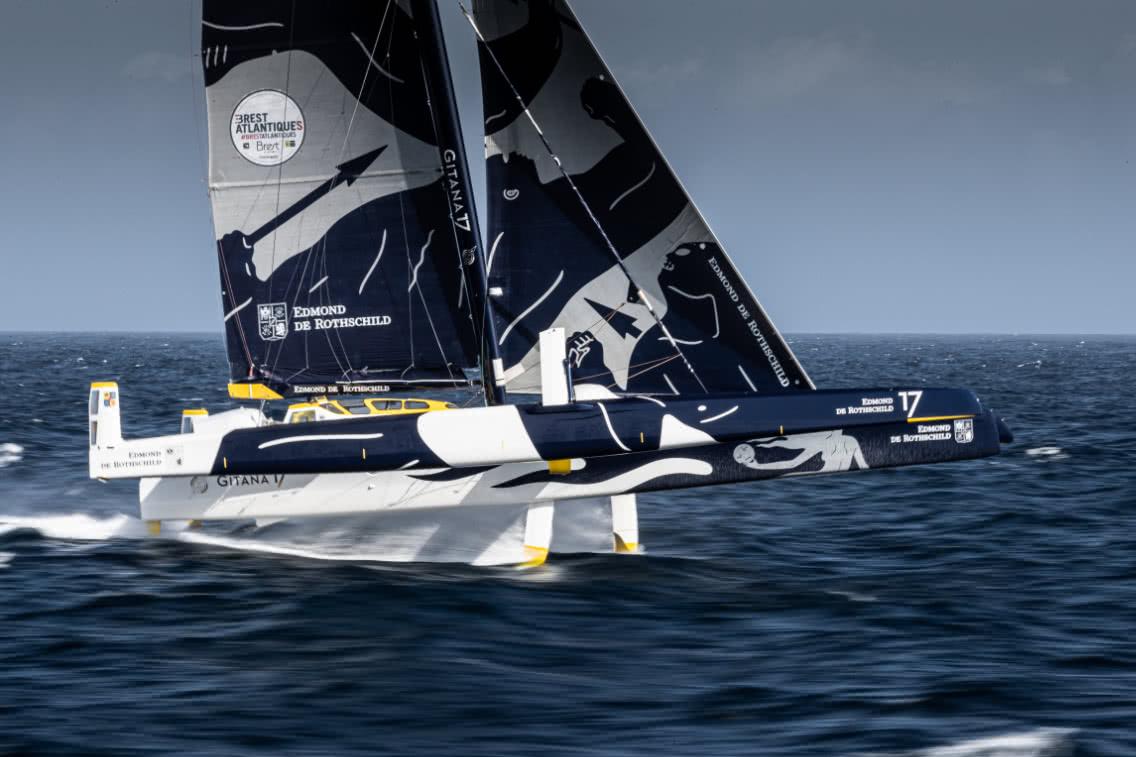
Ready for a long-distance race
The route for the Brest Atlantiques spans some 14,000 nautical miles from the tip of Brittany to Rio de Janeiro via Cape Town in South Africa before returning to Brest. It’s a unique and demanding non-stop course, which naturally makes for a thrilling ride for the competitive skippers on Gitana.
Familiar with major sail meets, Charles and Franck find it easy to project their minds into the challenge that awaits them, whilst accepting the great many unknowns inherent in such a race, starting with its duration and the format of the exercise: “I’m not expecting an easy race, that’s for sure! However, with the experience I’ve gleaned in recent years, I feel fully prepared for a challenge of this kind. Franck and I have done the relevant training. Long-format races like the Brest Atlantiques are something that I’ve been used to doing for years with the Volvo. After that, we have no references regarding racing a flying multihull on a route like this. Of course I recall the Transat Jacques Vabre 2013, which we won with Gitana, but the Multi70 was a less seaworthy trimaran and it was solely a single trip to Brazil. However things pan out, this race will enable us to massively raise our game as you learn the most when you’re driven into a corner on the racetrack.”
“This race will involve a very high pace”, explains Franck Cammas. “The Brest Atlantiques is no sprint. 30 days is a long-distance race albeit at high speed. We’ll very quickly need to find the right tempo, one that means we’re in the thick of the action, but always with our mind on managing the technical and material aspects. We’re going to have to try to be in it for the long haul and to my mind setting off too fast wouldn’t necessarily be the right option. I think that after the Route du Rhum, reliability became the priority for all the teams! The Brest Atlantiques is an ambitious challenge and a great route to take in order to continue the programme with greater confidence and composure.”
“A course like this, double-handed on a multihull, is an unknown entity as it’ll be a first for me, but that’s also what appeals to me… I feel like I’m 20 years old again, with the same enthusiasm and excitement as I had for my first transatlantic passage or my first Figaro. It’s really nice!” concludes Charles Caudrelier, his words speaking volumes about the magic that reigns with debut performances.
The Maxi Edmond de Rothschild is a concentration of technology and has benefited from the very latest innovations and developments. With 500 measurement points and close to 10-million pieces of data collected per hour on the water… The figures are breathtaking! Aboard the latest addition to the Gitana fleet, thanks to the optical fibre installed in the large composite parts like the foils and rudders, as well as the structure of the boat itself, nothing escapes the attention of the sailors and shore crews: position sensors, load sensors, distortion centres using optical fibre… Today, all this data and the feedback it enables are essential for giants like Gitana 17.



